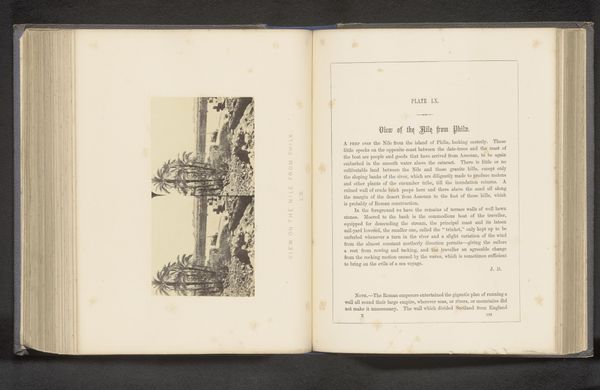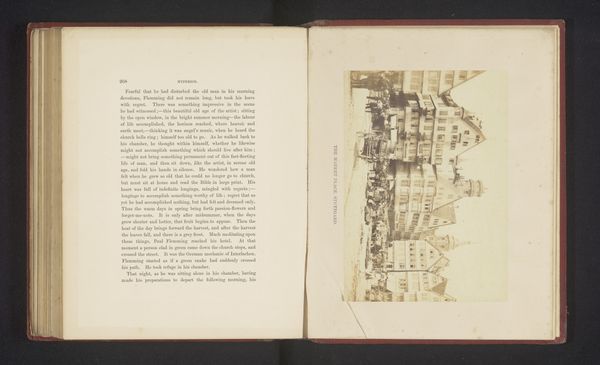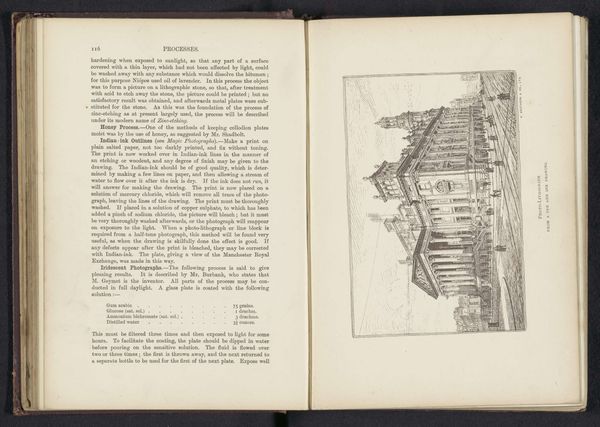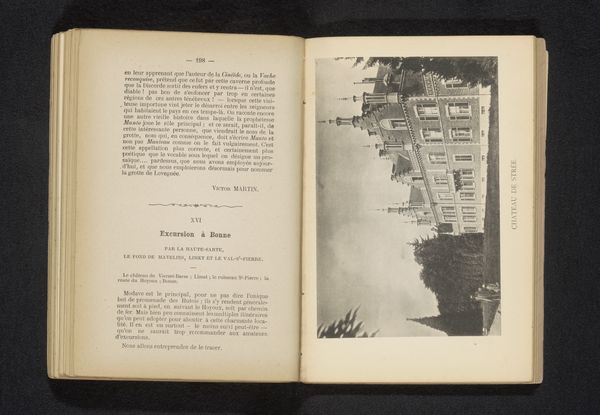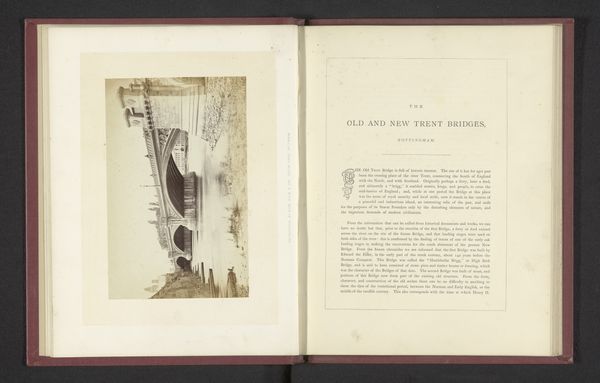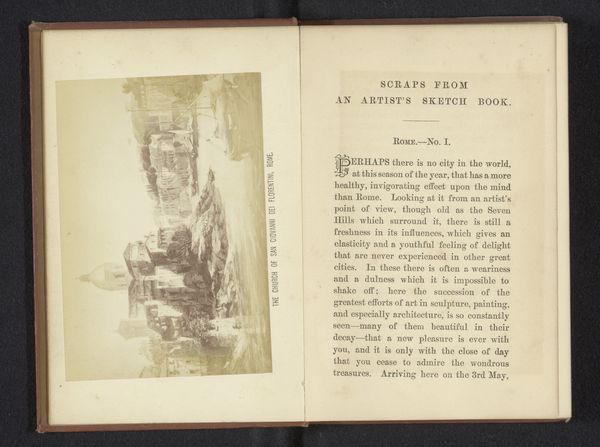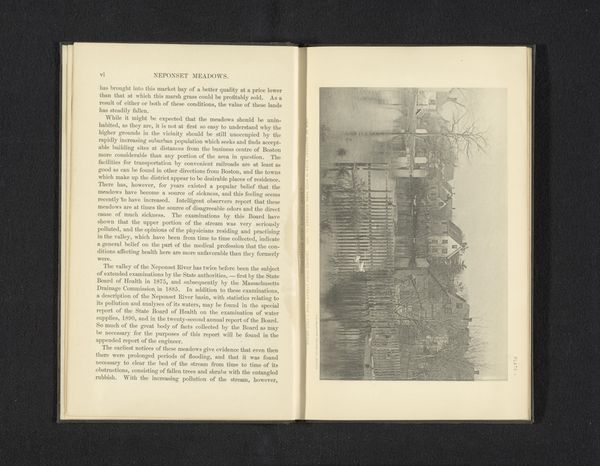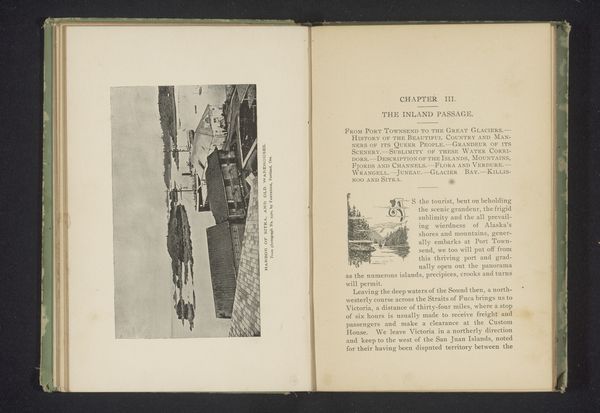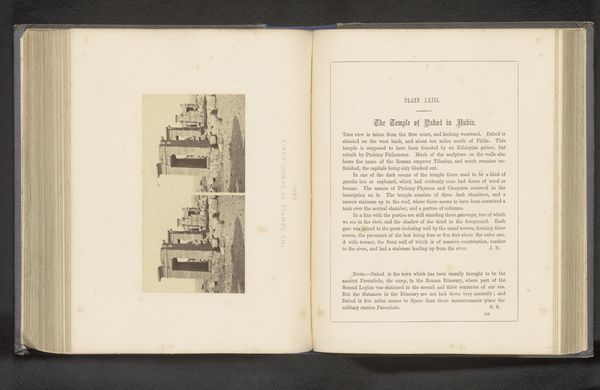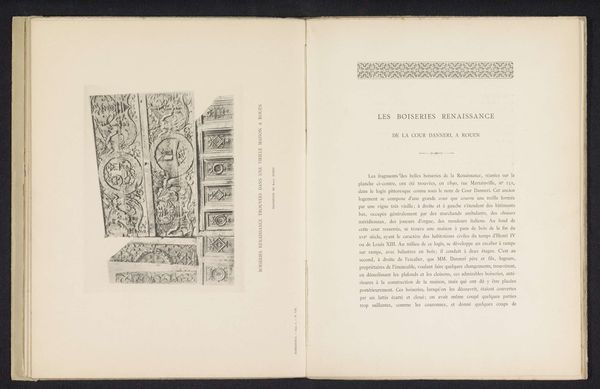
Fotoreproductie van een tekening, voorstellende het toegangsportaal van de Abdijkerk van Saint-Ouen te Rouen before 1895
0:00
0:00
drawing, print, etching, architecture
#
script typeface
#
drawing
#
aged paper
#
medieval
#
script typography
# print
#
etching
#
sketch book
#
hand drawn type
#
personal sketchbook
#
hand-drawn typeface
#
thick font
#
handwritten font
#
architecture
#
historical font
Dimensions: height 143 mm, width 181 mm
Copyright: Rijks Museum: Open Domain
Curator: Here we have an etching titled “Fotoreproductie van een tekening, voorstellende het toegangsportaal van de Abdijkerk van Saint-Ouen te Rouen” – that translates to "Photoreproduction of a drawing, depicting the entrance portal of the Abbey Church of Saint-Ouen in Rouen." It's attributed to N. Oberlender and dates to before 1895. Editor: The initial impression is quite striking. The crumbling architecture immediately draws your eyes into the aged paper and decaying medieval themes of a time long since past. The image has incredible depth. Curator: Indeed. Looking closely, we see that it's a reproduction within a book or perhaps a portfolio. The very fact it’s a reproduction speaks volumes. The ability to disseminate images widely transforms the audience. Previously only visited by the wealthy or church official the drawing now becomes an experience for the masses. The distribution becomes democratization of imagery, and more importantly its historical interpretation. Editor: I'm particularly drawn to the entrance itself. The repeated arches symbolize both earthly entrance and heavenly aspiration. Even the choice of typeface on the opposing page hints at medieval script, reminding us of the manuscripts once created within such walls. Curator: And don’t overlook the symbolic value of the ruin itself. During this era, romanticism favored ruins for their capacity to evoke sentiments of melancholy, and for illustrating the passage of time and change, which was of great concern to historians. Oberlender captured this fascination, while at the same time subtly referencing social structures. Editor: The stark contrast in the print heightens the sense of drama. It feels both inviting and imposing simultaneously. I think any modern viewer is prone to associate images of Gothic churches as somber, given that so many are used for images associated with film and fiction. Curator: That's a fascinating point, how images shift and accrue meaning over time depending on popular sentiment. As the architecture transitioned through varied phases of its social history it went from holy ground to public architectural show piece to being reinterpreted once again within the printed image. Editor: Reflecting on the way architecture acts as both structure and symbol offers fresh perspectives into how these places imprint upon cultural memory. Curator: Agreed. It highlights the power of the graphic arts to interpret space, not just represent it.
Comments
No comments
Be the first to comment and join the conversation on the ultimate creative platform.
